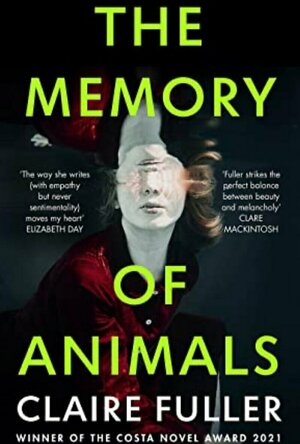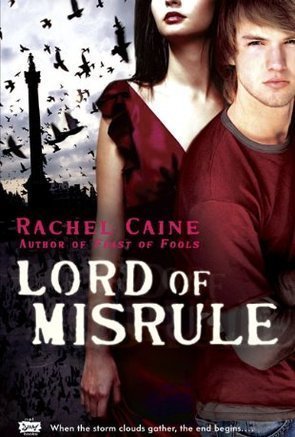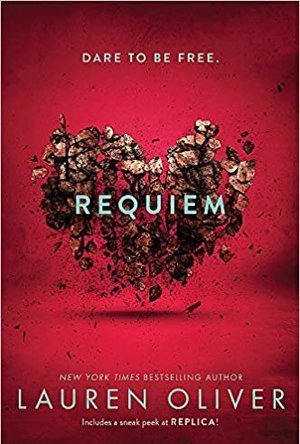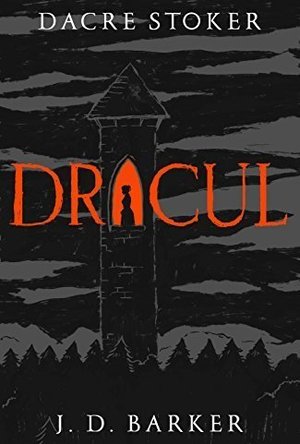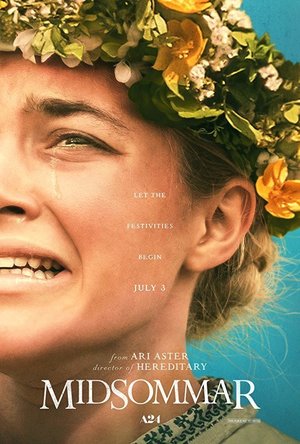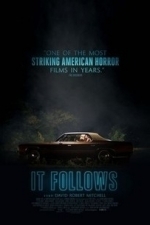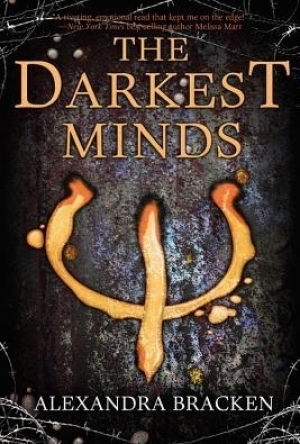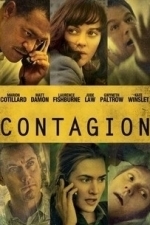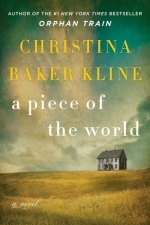Search
Search results
ClareR (5879 KP) rated The Memory of Animals in Books
Jun 8, 2023
I’m completely braised. I love Claire Fullers writing, I’ve loved everything I’ve read by her and The Memory of Animals is no exception. And the fact that this could be described as a dystopian or even an apocalyptic novel made it even more fascinating. I love this genre - even though it usually enters my dreams and makes for an interesting nights sleep!
This is a pandemic novel - but not our pandemic, not Covid. This is a dropsy-type disease, where those infected swell up, their brains swell up too, they forget - and more often than not, they die.
Neffy (Nefeli) and a group of young people volunteer to be vaccinated against, and then infected by, the virus. Something goes wrong, and it looks as though Neffy and four other test volunteers are the only ones who are alive and well. But they can’t leave the building they’re in and the food is running out.
Neffy is a Marine Biologist, an Aquarist, and my favourite parts were her letters to ‘H’ as well as her flashbacks to childhood and pre-pandemic.
This isn’t *just* a speculative, science fiction book, it’s a story about the human condition, about the human drive to survive against the odds, regret, loss, grief, memory, love and above all, hope.
I could go on and on about this. I would never have expected a novel like this from Claire Fuller after reading her previous novels, but that’s what makes it even better. I actually read this twice (unheard of for me, actually). I finished it and immediately started reading again.
So yes, I would most definitely strongly recommend this book!
This is a pandemic novel - but not our pandemic, not Covid. This is a dropsy-type disease, where those infected swell up, their brains swell up too, they forget - and more often than not, they die.
Neffy (Nefeli) and a group of young people volunteer to be vaccinated against, and then infected by, the virus. Something goes wrong, and it looks as though Neffy and four other test volunteers are the only ones who are alive and well. But they can’t leave the building they’re in and the food is running out.
Neffy is a Marine Biologist, an Aquarist, and my favourite parts were her letters to ‘H’ as well as her flashbacks to childhood and pre-pandemic.
This isn’t *just* a speculative, science fiction book, it’s a story about the human condition, about the human drive to survive against the odds, regret, loss, grief, memory, love and above all, hope.
I could go on and on about this. I would never have expected a novel like this from Claire Fuller after reading her previous novels, but that’s what makes it even better. I actually read this twice (unheard of for me, actually). I finished it and immediately started reading again.
So yes, I would most definitely strongly recommend this book!
Rachel King (13 KP) rated Lord of Misrule (The Morganville Vampires, #5) in Books
Feb 11, 2019
This book centered around a singular event, and the outcome of that event has the potential to change everything that the town of Morganville is about and how it is run. I found the plot of this book to be very unpredictable - which is a good thing - except for the fact that every book always centers around Claire and the choices she makes. The one-liners are as fantastic as always, and I love the introduction of a few new characters, such as Theo and his family, and the ex-Marine Hannah. I also found the introduction of a natural disaster as a major plot point to be refreshing - even though terrifying for the characters - since few books I read seem to work uncontrollable bad weather into the plot. For less than 300 pages, this book packs alot of sub-plots in, with the retribution against Monica, who I'm not convinced has learned from her mistakes yet, managing Mynin's bipolar behavior, and keeping track of what is happening with each of the four main characters/ Glass House residents. All of the possibilities in a town gone anarchic are explored to some degree, although I found that the lines that were used to control the college students to be less-than-believable. I am curious to see what happens to the human factions that were trying to exploit the mini-war by rebeling against the Powers That Be in the next book, Carpe Corpus (Morganville Vampires, Book 6), as well as how Mynin's disease plays out as it affects others en masse. The fact that Claire basically hardly ever goes to class and still manages to makes A's still bugs me, but I'm getting used to it. She has more exciting things to attend to!
Kyera (8 KP) rated Requiem (Delirium, #3) in Books
Jan 31, 2018
Requiem switches between Hana's and Lena's points-of-view. It gives us perspectives of the world and its current events through the eyes of a girl in the Wilds and one in society. Hana has chosen her path and it is different from Lena's. The action comes to a head and their existences are thrust together again.
While I enjoyed this book, it wasn't quite as good as the previous two. The book ended and I wasn't quite sure how I felt. In some ways, I was satisfied. There were no little questions or loose ends that should have been tied up. Lena has chosen her love, even if we don't see the effects of it. When you think of the immediate story everything seems good, but then you wonder about the world at large. The Resistance attacked and seemingly brought down the walls (both literally and we assume legally) in Portland. Success! But.. what happened in the rest of the world? Were those attacks conducted simultaneously across the United States? If they weren't, then the book ends with Portland no longer under government control and seemingly a new safe space for the Resistance/Invalids to live... but they're still in a world where love is a disease and the government will come for them. What happens to the people? The last we see of Hana, she's running off into the woods. I personally would like to know what happens to her. The more I think about the book, the more questions I'm faced with.
I loved the series and highly recommend reading it. Just a warning that there are more curse words in the novel than in the first. It's a great young adult series set in a world similar to our own, about learning more about yourself, growing and learning to love.
While I enjoyed this book, it wasn't quite as good as the previous two. The book ended and I wasn't quite sure how I felt. In some ways, I was satisfied. There were no little questions or loose ends that should have been tied up. Lena has chosen her love, even if we don't see the effects of it. When you think of the immediate story everything seems good, but then you wonder about the world at large. The Resistance attacked and seemingly brought down the walls (both literally and we assume legally) in Portland. Success! But.. what happened in the rest of the world? Were those attacks conducted simultaneously across the United States? If they weren't, then the book ends with Portland no longer under government control and seemingly a new safe space for the Resistance/Invalids to live... but they're still in a world where love is a disease and the government will come for them. What happens to the people? The last we see of Hana, she's running off into the woods. I personally would like to know what happens to her. The more I think about the book, the more questions I'm faced with.
I loved the series and highly recommend reading it. Just a warning that there are more curse words in the novel than in the first. It's a great young adult series set in a world similar to our own, about learning more about yourself, growing and learning to love.
The start of Bram Stokers biography?
And to think that I nearly gave up on this to begin with! At about 20% in, it just didn't seem to be drawing me in at all. So how pleased am I that I persevered?!!
This is a prequel to Bram Stokers Dracula, and is the story of Bram himself. It postulates that Dracula and vampires really do exist, Bram and his family had an intimate relationship with one (not like THAT!), and Dracula was written as a warning about the Undead. Well, I clearly don't know what to believe now!
The language used in this novel is a little more up to date than Bram Stokers original: it's written for the modern reader (as Bram's was at the time, I suppose), and is consequently much easier to read. This book is supposedly based on notes that Bram left behind - whether they were ideas for another book, or they were 'actual occurrences', we'll never really know.
Bram and his family are followed from Bram's early childhood, up until well after their encounter with Dracul. It's exciting, there's loads of action, and I had some serious worries about Bram's siblings! There's loads of historical detail (potato famine in Ireland, disease, poverty) which I rather enjoyed. But it's the encounters with the vampires that I really loved. There's always going to be someone that makes the comparison to 'that' vampire series, and so I'll be the one. There IS NO comparison. These aren't nicey-nicey vampires who sparkle. These are largely speaking, evil, dark-magic-using, killing machines. Much more fun.
I think this is probably going to be a series. Which I will obviously be reading. Obviously.
Many thanks to NetGalley and the publisher for my copy of this book.
This is a prequel to Bram Stokers Dracula, and is the story of Bram himself. It postulates that Dracula and vampires really do exist, Bram and his family had an intimate relationship with one (not like THAT!), and Dracula was written as a warning about the Undead. Well, I clearly don't know what to believe now!
The language used in this novel is a little more up to date than Bram Stokers original: it's written for the modern reader (as Bram's was at the time, I suppose), and is consequently much easier to read. This book is supposedly based on notes that Bram left behind - whether they were ideas for another book, or they were 'actual occurrences', we'll never really know.
Bram and his family are followed from Bram's early childhood, up until well after their encounter with Dracul. It's exciting, there's loads of action, and I had some serious worries about Bram's siblings! There's loads of historical detail (potato famine in Ireland, disease, poverty) which I rather enjoyed. But it's the encounters with the vampires that I really loved. There's always going to be someone that makes the comparison to 'that' vampire series, and so I'll be the one. There IS NO comparison. These aren't nicey-nicey vampires who sparkle. These are largely speaking, evil, dark-magic-using, killing machines. Much more fun.
I think this is probably going to be a series. Which I will obviously be reading. Obviously.
Many thanks to NetGalley and the publisher for my copy of this book.
Peter Strickland recommended Midsommar (2019) in Movies (curated)
LeftSideCut (3776 KP) rated It Follows (2015) in Movies
Oct 9, 2020
There are plenty of positive aspects to It Follows. The concept for one is decent and an original idea for a horror film. A sexually transmitted disease that causes an entity to relentlessly hunt you down at the pace of a Romero era zombie, never giving up until you're dead, unless you pass it on to someone new.
It's a very modern take on horror, acting as an age old cautionary tale about casual sex, masquerading as a creepy stalker flick.
The image of a person slowly walking towards you, staring at you the whole time is unsettling enough, but the entity's appearance will frequently change. This allows even people in the background shots to carry a weight of danger in the times where the audience is unaware of its whereabouts. It's a simple yet clever trick that gives It Follows a steady undercurrent of dread.
There's some really nice cinematography on display as well. Lingering shots of empty spaces are intimidating (I found myself constantly scanning for the entity, and got caught out more than once) It also has a phenomenal synth soundtrack courtesy of Disasterpiece. It will switch from ethereal to jarring in a flash and contributes greatly to the dark tone this film carries.
I wasn't a huge fan of the constant frame dissolves and screen wipes. It's kept taking me out of the narrative a bit, and the film suffers greatly with it's characters constantly making silly decisions. Although Maika Monroe is a solid lead.
Overall, It Follows is a genuinely unsettling horror-thriller with some truly chilling moments. It's just a little frustrating that the great concept isn't explored as much as it could have been.
It's a very modern take on horror, acting as an age old cautionary tale about casual sex, masquerading as a creepy stalker flick.
The image of a person slowly walking towards you, staring at you the whole time is unsettling enough, but the entity's appearance will frequently change. This allows even people in the background shots to carry a weight of danger in the times where the audience is unaware of its whereabouts. It's a simple yet clever trick that gives It Follows a steady undercurrent of dread.
There's some really nice cinematography on display as well. Lingering shots of empty spaces are intimidating (I found myself constantly scanning for the entity, and got caught out more than once) It also has a phenomenal synth soundtrack courtesy of Disasterpiece. It will switch from ethereal to jarring in a flash and contributes greatly to the dark tone this film carries.
I wasn't a huge fan of the constant frame dissolves and screen wipes. It's kept taking me out of the narrative a bit, and the film suffers greatly with it's characters constantly making silly decisions. Although Maika Monroe is a solid lead.
Overall, It Follows is a genuinely unsettling horror-thriller with some truly chilling moments. It's just a little frustrating that the great concept isn't explored as much as it could have been.
Lyndsey Gollogly (2893 KP) rated The Darkest Minds in Books
May 12, 2022
83 of 230
Book
The Darkest Minds ( The Darkest Minds book 1)
By Alexandra Bracken
⭐️⭐️⭐️
When Ruby wakes up on her tenth birthday, something about her has changed. Something alarming enough to make her parents lock her in the garage and call the police. Something that gets her sent to Thurmond, a brutal government 'rehabilitation camp.' She might have survived the mysterious disease that's killed most of America's children, but she and the others have emerged with something far worse: frightening abilities they cannot control.
Now sixteen, Ruby is one of the dangerous ones.
When the truth comes out, Ruby barely escapes Thurmond with her life. Now she's on the run, desperate to find the one safe haven left for kids like her - East River. She joins a group of kids who escaped their own camp. Liam, their brave leader, is falling hard for Ruby. But no matter how much she aches for him, Ruby can't risk getting close. Not after what happened to her parents.
When they arrive at East River, nothing is as it seems, least of all its mysterious leader. But there are other forces at work, people who will stop at nothing to use Ruby in their fight against the government. Ruby will be faced with a terrible choice, one that may mean giving up her only chance at a life worth living.
This started off so well I was really enjoying it then I sort of hit a brick wall I can’t tell you at what point I just became a little bored in the middle. It was ok just I think I wanted more from the last half of the book. The concept was really interesting and in quite frightening especially if you have kids. I don’t know something was just lacking. I’m hoping book 2 is better.
Book
The Darkest Minds ( The Darkest Minds book 1)
By Alexandra Bracken
⭐️⭐️⭐️
When Ruby wakes up on her tenth birthday, something about her has changed. Something alarming enough to make her parents lock her in the garage and call the police. Something that gets her sent to Thurmond, a brutal government 'rehabilitation camp.' She might have survived the mysterious disease that's killed most of America's children, but she and the others have emerged with something far worse: frightening abilities they cannot control.
Now sixteen, Ruby is one of the dangerous ones.
When the truth comes out, Ruby barely escapes Thurmond with her life. Now she's on the run, desperate to find the one safe haven left for kids like her - East River. She joins a group of kids who escaped their own camp. Liam, their brave leader, is falling hard for Ruby. But no matter how much she aches for him, Ruby can't risk getting close. Not after what happened to her parents.
When they arrive at East River, nothing is as it seems, least of all its mysterious leader. But there are other forces at work, people who will stop at nothing to use Ruby in their fight against the government. Ruby will be faced with a terrible choice, one that may mean giving up her only chance at a life worth living.
This started off so well I was really enjoying it then I sort of hit a brick wall I can’t tell you at what point I just became a little bored in the middle. It was ok just I think I wanted more from the last half of the book. The concept was really interesting and in quite frightening especially if you have kids. I don’t know something was just lacking. I’m hoping book 2 is better.
Movie Metropolis (309 KP) rated Contagion (2011) in Movies
Jun 11, 2019
Steven Soderbergh has produced some fine films in his time as an established director; Ocean’s Eleven was a sublime mix of dark humour and action, whilst Ocean’s Twelve and Thirteen remained decent but not exactly pulse-racing. Here, it seems Soderbergh sticks to what he knows best, how to deliver a brilliantly shot, gripping film. Here we have, Contagion.
An all-star cast with the likes of Gwyneth Paltrow, Kate Winslet, Matt Damon and Jude Law is bolstered by excellent cinematography and nail-biting claustrophobia in a film which never forgets its purpose: to shock.
Contagion starts with a cough, a single cough from a single woman, which in turn spreads across the globe, killing over 20 million people in every country on the planet and becoming one of the worst viral epidemics the world has ever seen. The directing style is exquisite and focuses on the days after the first contraction of the deadly virus; close-ups of door knobs and drinking fountains add to the heightened panic and sense of claustrophobia and the continuous references to bird-flu bring it home how frail a race we actually are.
Soderbergh gets stuck into the details of the virus straight away and the pace never lets up, you’ll be gasping for air with the infected as you struggle to keep pace with what’s going on; it’s a relentless film, much like the disease itself. The movie is one of many recent developments that have parallel storylines running throughout; Kate Winslet is a scientist at the centre of disease research, whilst Matt Damon plays a middle aged father protecting his daughter.
Gwyneth Paltrow plays a wife and mother who has been embarking on a dangerous affair whilst away on business and it has to be said, she is excellent in her role, even though it lasts a mere 20 minutes before she pegs it. Her illness is well controlled on screen and you share the pain she is in.
Matt Damon is somehow immune to the virus after losing his wife (Paltrow) and more disturbingly, his son in scenes unbefitting of the films 12A certificate and Kate Winslet looks surprisingly angelic in her body bag… oops, didn’t mean to spoil that for you.
Alas, it’s not all good news as Jude Law pops up now and again as an annoying journalist trying to discover a cure and shame the money grabbing pharmaceutical companies, he plays the character well and you definitely buy into his sense of ‘crazy’ but out of all the stories shuffling for your attention, his is the one you care least about.
Unfortunately, some other small issues hold the film from being a complete success. Parallel storylines are all well and good but there are perhaps too many here. Whilst focusing on Winslet dealing with the fact she has contracted the virus, you forget about how Mr. Damon is coping looking after his potentially not immune daughter and the same can be said for Law’s character too. Which one are we to focus on?
Contagion is artistically, a brilliant film, but it could be said that it’s more style over substance. Yes, the characters have depth, though not as much as we’d like, the story is well written and the shots are beautifully choreographed but that good, solid story is lost about half way through as Soderbergh tries to handle all the different viewpoints. It’s a fantastic film, but not the outright success it could have been. You will however, be reaching for that anti-bacterial hand cleanser a little more often.
https://moviemetropolis.net/2011/11/08/review-contagion-2011/
An all-star cast with the likes of Gwyneth Paltrow, Kate Winslet, Matt Damon and Jude Law is bolstered by excellent cinematography and nail-biting claustrophobia in a film which never forgets its purpose: to shock.
Contagion starts with a cough, a single cough from a single woman, which in turn spreads across the globe, killing over 20 million people in every country on the planet and becoming one of the worst viral epidemics the world has ever seen. The directing style is exquisite and focuses on the days after the first contraction of the deadly virus; close-ups of door knobs and drinking fountains add to the heightened panic and sense of claustrophobia and the continuous references to bird-flu bring it home how frail a race we actually are.
Soderbergh gets stuck into the details of the virus straight away and the pace never lets up, you’ll be gasping for air with the infected as you struggle to keep pace with what’s going on; it’s a relentless film, much like the disease itself. The movie is one of many recent developments that have parallel storylines running throughout; Kate Winslet is a scientist at the centre of disease research, whilst Matt Damon plays a middle aged father protecting his daughter.
Gwyneth Paltrow plays a wife and mother who has been embarking on a dangerous affair whilst away on business and it has to be said, she is excellent in her role, even though it lasts a mere 20 minutes before she pegs it. Her illness is well controlled on screen and you share the pain she is in.
Matt Damon is somehow immune to the virus after losing his wife (Paltrow) and more disturbingly, his son in scenes unbefitting of the films 12A certificate and Kate Winslet looks surprisingly angelic in her body bag… oops, didn’t mean to spoil that for you.
Alas, it’s not all good news as Jude Law pops up now and again as an annoying journalist trying to discover a cure and shame the money grabbing pharmaceutical companies, he plays the character well and you definitely buy into his sense of ‘crazy’ but out of all the stories shuffling for your attention, his is the one you care least about.
Unfortunately, some other small issues hold the film from being a complete success. Parallel storylines are all well and good but there are perhaps too many here. Whilst focusing on Winslet dealing with the fact she has contracted the virus, you forget about how Mr. Damon is coping looking after his potentially not immune daughter and the same can be said for Law’s character too. Which one are we to focus on?
Contagion is artistically, a brilliant film, but it could be said that it’s more style over substance. Yes, the characters have depth, though not as much as we’d like, the story is well written and the shots are beautifully choreographed but that good, solid story is lost about half way through as Soderbergh tries to handle all the different viewpoints. It’s a fantastic film, but not the outright success it could have been. You will however, be reaching for that anti-bacterial hand cleanser a little more often.
https://moviemetropolis.net/2011/11/08/review-contagion-2011/
Hazel (1853 KP) rated A Piece Of The World in Books
May 30, 2018
I received this book for free through Goodreads First Reads.
Until reading Christina Baker Kline’s note at the end of the book, it is impossible to guess that it is based on real people, although, admittedly, it is a little strange to name the main character after oneself. In fact, A Piece of the World is written around a single painting in the Museum of Modern Art, New York: Christina’s World (1948) by Andrew Wyeth, a man who appears and paints this work in the story.
Baker Cline researched thoroughly into the background story of the painting. Christina Olson, the main character of this book, was a real person who posed for Wyeth as he painted this striking picture. Although the overall story is a work of fiction, the dates and key characters are biographically accurate. Beginning in 1939, the narrative weaves too and fro, from Christina’s present day to her childhood and back again. Christina is an ageing woman who can barely walk and lives in a dilapidated cottage with her brother on a hill in the village of Cushing, Maine. Having lived in this state for so long, it is a welcome surprise to be visited by the young Andrew Wyeth who falls in love with the cottage and regularly comes to work on his canvases in their upper rooms. Through their peaceful relationship and flashbacks to her past, Christina’s character development is investigated and knitted together to explain why she has become this recluse on a hill.
Christina had problems from a very young age. After almost dying from a fever, she developed an undiagnosed degenerative disease that slowly ate away at the nerves in her arms and legs. Today, neurologists believe this to be Charcot-Marie-Tooth disease but there were no doctors able to provide this diagnosis at the time. Christina suffered aches and pains growing up and could barely walk in a straight line. Her determination to keep going is admirable and makes her a strong female protagonist.
One day in her early twenties, Christina meets a boy who pays her the kind of attention that she has never received before. Believing his promises that they will be together forever, she dares to dream of having a normal life. The reader, however, knows that the future Christina is alone with only her brother for company, making it heartbreaking to read of their developing romance knowing that it is not going to last.
There is no “happy-ever-after” to this story, nor is there a sad ending. It is an account of a woman who had been dealt a raw deal in life but continued getting on despite it. The end result, the painting Christina’s World, shows Christina as she sees herself. She may not be able to walk but she is still a woman; she made the most of her childhood, she never complained. This painting is her “letter to the World that never wrote to [Her].”
A Piece of the World is a powerful novel about purpose and determination. Christina may not have had a typical, successful life or become famous but she had her daily achievements: crawling through a field for an hour to visit a friend, cooking dinners despite not being able to stand up, carrying on after the end of a romantic relationship …
Written as gracefully as the brushstrokes of a painting with elements of Emily Dickinson thrown in here and there, A Piece of the World is a beautiful piece of work. It is something that can be enjoyed as you are mentally drawn into the storyline, leaving you wondering what happens to Christina and her brother after the completion of the painting. It is a novel the author can be proud of.
Until reading Christina Baker Kline’s note at the end of the book, it is impossible to guess that it is based on real people, although, admittedly, it is a little strange to name the main character after oneself. In fact, A Piece of the World is written around a single painting in the Museum of Modern Art, New York: Christina’s World (1948) by Andrew Wyeth, a man who appears and paints this work in the story.
Baker Cline researched thoroughly into the background story of the painting. Christina Olson, the main character of this book, was a real person who posed for Wyeth as he painted this striking picture. Although the overall story is a work of fiction, the dates and key characters are biographically accurate. Beginning in 1939, the narrative weaves too and fro, from Christina’s present day to her childhood and back again. Christina is an ageing woman who can barely walk and lives in a dilapidated cottage with her brother on a hill in the village of Cushing, Maine. Having lived in this state for so long, it is a welcome surprise to be visited by the young Andrew Wyeth who falls in love with the cottage and regularly comes to work on his canvases in their upper rooms. Through their peaceful relationship and flashbacks to her past, Christina’s character development is investigated and knitted together to explain why she has become this recluse on a hill.
Christina had problems from a very young age. After almost dying from a fever, she developed an undiagnosed degenerative disease that slowly ate away at the nerves in her arms and legs. Today, neurologists believe this to be Charcot-Marie-Tooth disease but there were no doctors able to provide this diagnosis at the time. Christina suffered aches and pains growing up and could barely walk in a straight line. Her determination to keep going is admirable and makes her a strong female protagonist.
One day in her early twenties, Christina meets a boy who pays her the kind of attention that she has never received before. Believing his promises that they will be together forever, she dares to dream of having a normal life. The reader, however, knows that the future Christina is alone with only her brother for company, making it heartbreaking to read of their developing romance knowing that it is not going to last.
There is no “happy-ever-after” to this story, nor is there a sad ending. It is an account of a woman who had been dealt a raw deal in life but continued getting on despite it. The end result, the painting Christina’s World, shows Christina as she sees herself. She may not be able to walk but she is still a woman; she made the most of her childhood, she never complained. This painting is her “letter to the World that never wrote to [Her].”
A Piece of the World is a powerful novel about purpose and determination. Christina may not have had a typical, successful life or become famous but she had her daily achievements: crawling through a field for an hour to visit a friend, cooking dinners despite not being able to stand up, carrying on after the end of a romantic relationship …
Written as gracefully as the brushstrokes of a painting with elements of Emily Dickinson thrown in here and there, A Piece of the World is a beautiful piece of work. It is something that can be enjoyed as you are mentally drawn into the storyline, leaving you wondering what happens to Christina and her brother after the completion of the painting. It is a novel the author can be proud of.
Hazel (1853 KP) rated A Piece Of The World in Books
Dec 14, 2018
<i>I received this book for free through Goodreads First Reads.</i>
Until reading Christina Baker Kline’s note at the end of the book, it is impossible to guess that it is based on real people, although, admittedly, it is a little strange to name the main character after oneself. In fact, <i>A Piece of the World</i> is written around a single painting in the Museum of Modern Art, New York: <i>Christina’s World</i> (1948) by Andrew Wyeth, a man who appears and paints this work in the story.
Baker Cline researched thoroughly into the background story of the painting. Christina Olson, the main character of this book, was a real person who posed for Wyeth as he painted this striking picture. Although the overall story is a work of fiction, the dates and key characters are biographically accurate. Beginning in 1939, the narrative weaves too and fro, from Christina’s present day to her childhood and back again. Christina is an ageing woman who can barely walk and lives in a dilapidated cottage with her brother on a hill in the village of Cushing, Maine. Having lived in this state for so long, it is a welcome surprise to be visited by the young Andrew Wyeth who falls in love with the cottage and regularly comes to work on his canvases in their upper rooms. Through their peaceful relationship and flashbacks to her past, Christina’s character development is investigated and knitted together to explain why she has become this recluse on a hill.
Christina had problems from a very young age. After almost dying from a fever, she developed an undiagnosed degenerative disease that slowly ate away at the nerves in her arms and legs. Today, neurologists believe this to be <i>Charcot-Marie-Tooth</i> disease but there were no doctors able to provide this diagnosis at the time. Christina suffered aches and pains growing up and could barely walk in a straight line. Her determination to keep going is admirable and makes her a strong female protagonist.
One day in her early twenties, Christina meets a boy who pays her the kind of attention that she has never received before. Believing his promises that they will be together forever, she dares to dream of having a normal life. The reader, however, knows that the future Christina is alone with only her brother for company, making it heartbreaking to read of their developing romance knowing that it is not going to last.
There is no “happy-ever-after” to this story, nor is there a sad ending. It is an account of a woman who had been dealt a raw deal in life but continued getting on despite it. The end result, the painting <i>Christina’s World</i>, shows Christina as she sees herself. She may not be able to walk but she is still a woman; she made the most of her childhood, she never complained. This painting is her “letter to the World that never wrote to [Her].”
<i>A Piece of the World</i> is a powerful novel about purpose and determination. Christina may not have had a typical, successful life or become famous but she had her daily achievements: crawling through a field for an hour to visit a friend, cooking dinners despite not being able to stand up, carrying on after the end of a romantic relationship …
Written as gracefully as the brushstrokes of a painting with elements of Emily Dickinson thrown in here and there, </i>A Piece of the World</i> is a beautiful piece of work. It is something that can be enjoyed as you are mentally drawn into the storyline, leaving you wondering what happens to Christina and her brother after the completion of the painting. It is a novel the author can be proud of.
<imgsrc="https://www.moma.org/media/W1siZiIsIjE2NTQ1NyJdLFsicCIsImNvbnZlcnQiLCItcmVzaXplIDIwMDB4MjAwMFx1MDAzZSJdXQ.jpg?sha=33c151dba7f8de4c"width="100"height="40"alt="ChristinasWorld"/>;
Until reading Christina Baker Kline’s note at the end of the book, it is impossible to guess that it is based on real people, although, admittedly, it is a little strange to name the main character after oneself. In fact, <i>A Piece of the World</i> is written around a single painting in the Museum of Modern Art, New York: <i>Christina’s World</i> (1948) by Andrew Wyeth, a man who appears and paints this work in the story.
Baker Cline researched thoroughly into the background story of the painting. Christina Olson, the main character of this book, was a real person who posed for Wyeth as he painted this striking picture. Although the overall story is a work of fiction, the dates and key characters are biographically accurate. Beginning in 1939, the narrative weaves too and fro, from Christina’s present day to her childhood and back again. Christina is an ageing woman who can barely walk and lives in a dilapidated cottage with her brother on a hill in the village of Cushing, Maine. Having lived in this state for so long, it is a welcome surprise to be visited by the young Andrew Wyeth who falls in love with the cottage and regularly comes to work on his canvases in their upper rooms. Through their peaceful relationship and flashbacks to her past, Christina’s character development is investigated and knitted together to explain why she has become this recluse on a hill.
Christina had problems from a very young age. After almost dying from a fever, she developed an undiagnosed degenerative disease that slowly ate away at the nerves in her arms and legs. Today, neurologists believe this to be <i>Charcot-Marie-Tooth</i> disease but there were no doctors able to provide this diagnosis at the time. Christina suffered aches and pains growing up and could barely walk in a straight line. Her determination to keep going is admirable and makes her a strong female protagonist.
One day in her early twenties, Christina meets a boy who pays her the kind of attention that she has never received before. Believing his promises that they will be together forever, she dares to dream of having a normal life. The reader, however, knows that the future Christina is alone with only her brother for company, making it heartbreaking to read of their developing romance knowing that it is not going to last.
There is no “happy-ever-after” to this story, nor is there a sad ending. It is an account of a woman who had been dealt a raw deal in life but continued getting on despite it. The end result, the painting <i>Christina’s World</i>, shows Christina as she sees herself. She may not be able to walk but she is still a woman; she made the most of her childhood, she never complained. This painting is her “letter to the World that never wrote to [Her].”
<i>A Piece of the World</i> is a powerful novel about purpose and determination. Christina may not have had a typical, successful life or become famous but she had her daily achievements: crawling through a field for an hour to visit a friend, cooking dinners despite not being able to stand up, carrying on after the end of a romantic relationship …
Written as gracefully as the brushstrokes of a painting with elements of Emily Dickinson thrown in here and there, </i>A Piece of the World</i> is a beautiful piece of work. It is something that can be enjoyed as you are mentally drawn into the storyline, leaving you wondering what happens to Christina and her brother after the completion of the painting. It is a novel the author can be proud of.
<imgsrc="https://www.moma.org/media/W1siZiIsIjE2NTQ1NyJdLFsicCIsImNvbnZlcnQiLCItcmVzaXplIDIwMDB4MjAwMFx1MDAzZSJdXQ.jpg?sha=33c151dba7f8de4c"width="100"height="40"alt="ChristinasWorld"/>;
